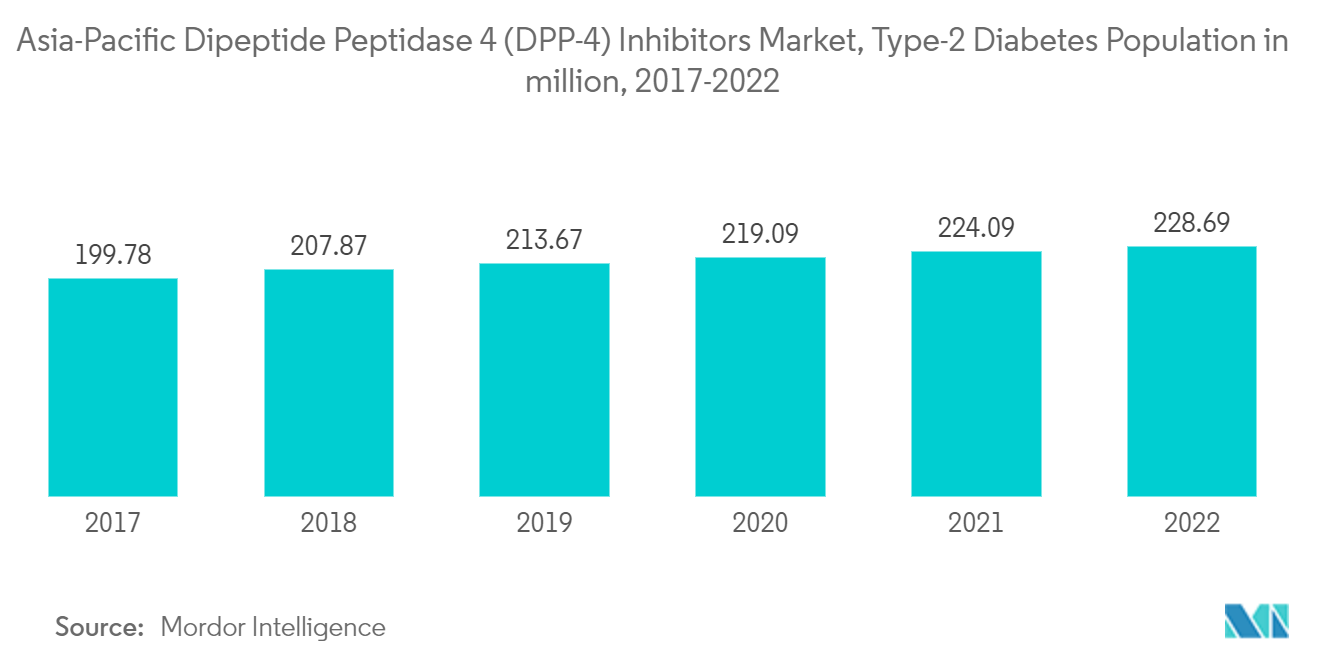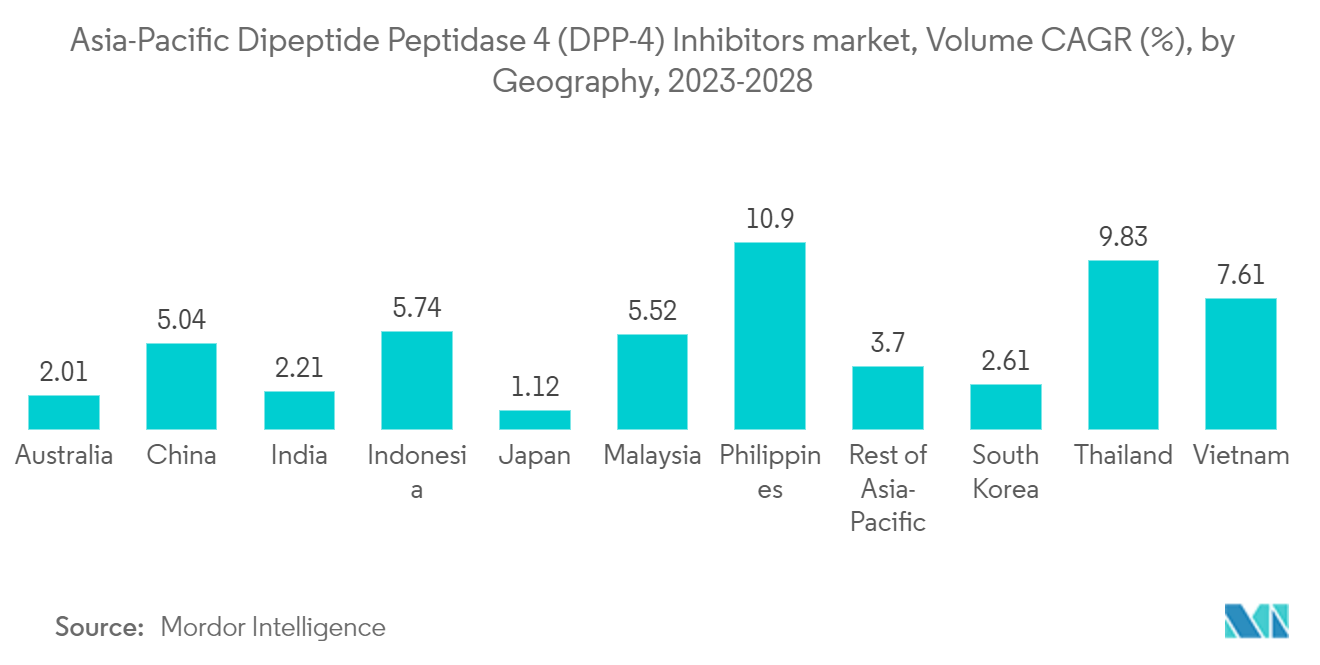Market Trends of Asia-Pacific Dipeptide Peptidase 4 (DPP-4) Inhibitors Industry
The Tradjenta segment is expected to witness the highest CAGR in the Asia-Pacific dipeptide peptidase 4 (DDP-4) inhibitors market over the forecast period
The Tradjenta segment is expected to witness the highest CAGR of around 7% in the Asia-Pacific dipeptide peptidase 4 (DDP-4) inhibitors market over the forecast period.
Tradjenta is a prescription drug that helps improve blood glucose control in adults with type 2 diabetes and is considered an adjunct treatment to diet and exercise. It is also used as an add-on therapy to insulin. Tradjenta should not be used in patients with type 1 diabetes or for treating diabetic ketoacidosis. DPP-4 inhibitors are widely prescribed in Asian countries, in general, and are the most prescribed class of oral glucose-lowering drug in Japan. Drug class, patient characteristics, and severity of renal impairment characterize the persistence of oral anti-diabetic treatment for type 2 diabetes. Unlike older glucose-lowering drugs such as sulfonylureas and insulin, DPP-4 inhibitors contain an inherently low risk of causing hypoglycemia. It is due to their glucose-dependent insulinotropic mechanism of action mediated via the incretin hormone glucagon-like peptide-1.
The Asia-Pacific region witnessed an alarming increase in the prevalence of diabetes in recent years. In developing countries, such as China and India, the rate of diabetes is at an all-time high. Diabetes is associated with many health complications. Patients with diabetes require many corrections throughout the day to maintain nominal blood glucose levels, such as oral anti-diabetic medication or ingestion of additional carbohydrates by monitoring their blood glucose levels. The rapidly increasing incidence and prevalence of diabetic patients and healthcare expenditure are indications of the increasing usage of diabetic drugs. The use of oral anti-diabetes drugs is rising because new-generation oral drugs, such as DPP-4 and SGLT-2, reduce the rate of CV risk in diabetes patients.
Owing to the factors mentioned above, the market is likely to grow.

China holds the highest market share in the Asia-Pacific Dipeptide Peptidase 4 (DPP-4) Inhibitors Market in the current year
China holds the highest market share of about 41.8% in the Asia-Pacific Dipeptide Peptidase 4 (DPP-4) Inhibitors Market in the current year.
As per the IDF 2021 report, an estimated 141 million adults were living with diabetes in China, a rise of 20% over the past two years. Over half (50.5%) of adults living with diabetes in China are undiagnosed. 90% of people with diabetes contain type 2 diabetes. The rise in the number of people with type 2 is driven by a complex interplay of socio-economic, demographic, environmental, and genetic factors. Key contributors include urbanization, an aging population, decreasing levels of physical activity, and increased levels of overweight and obesity. Evidence suggests that type 2 diabetes can often be prevented. In contrast, early diagnosis and access to appropriate care for all types of diabetes can avoid or delay complications in people with the condition.
When diabetes is undetected or inadequately treated, people with diabetes are at risk of serious and life-threatening complications, such as heart attack, stroke, kidney failure, blindness, and lower-limb amputation. These result in reduced quality of life and higher healthcare costs. China significantly improved the detection and management of diabetes with its pilot projects in NDAs (National Demonstration Areas) and its attempts to improve health system integration. These initiatives demonstrate a willingness to confront the rise of diabetes with strategies based on health promotion, disease detection, and managing the multiple conditions and complications associated with the disease.
Therefore, owing to the factors above, the growth of the studied market is anticipated in the Asia-Pacific Region.

